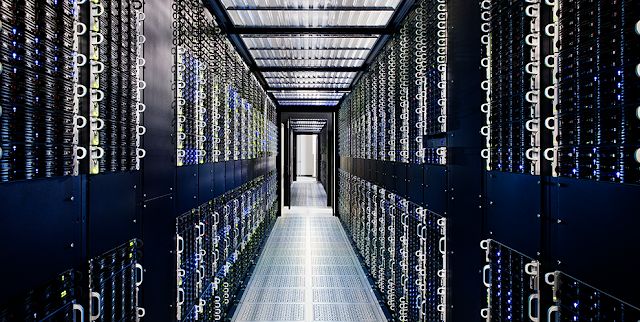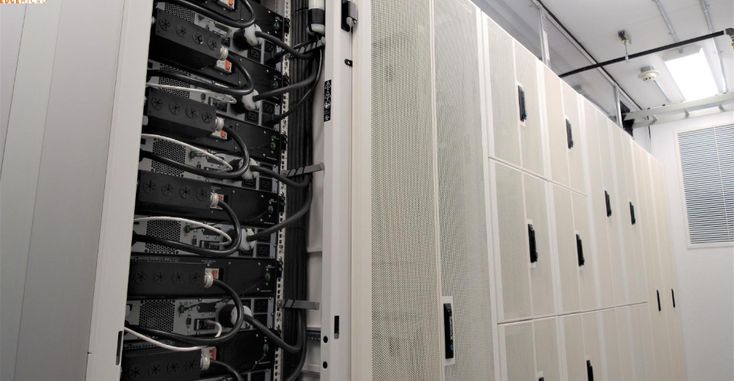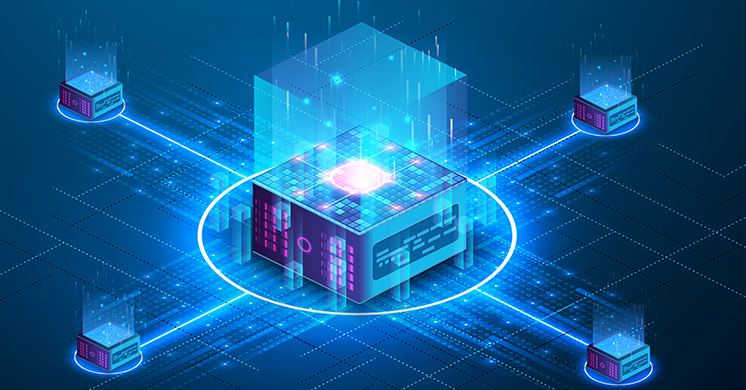In an increasingly data-driven world, the traditional model of sending all information to distant centralized cloud data centers is facing new challenges. The explosive growth of IoT devices, the rise of real-time applications, and the demand for instant insights are pushing the boundaries of network latency and bandwidth. This new frontier is being decisively conquered by Edge Computing, a distributed paradigm that brings computation and data storage physically closer to the sources of data generation—the ‘edge’ of the network. This isn’t merely a technical shift; it’s a fundamental reimagining of data processing, offering unprecedented benefits in terms of speed, efficiency, security, and autonomy. By decentralizing processing power, Edge Computing truly brings data closer to home, unlocking a new era of responsiveness and intelligent operations.
The Evolution of Computing Location: From Centralized to Distributed
To fully appreciate the significance and driving forces behind Edge Computing, it’s crucial to understand the historical trajectory of computing, from highly centralized models to today’s increasingly distributed architectures.
A. The Mainframe Era: Extreme Centralization
The earliest forms of computing were characterized by extreme centralization.
- Monolithic Mainframes: In the mid-20th century, computing power resided in colossal mainframes, typically housed in specialized, climate-controlled data centers. All data processing and storage occurred on these single, powerful machines.
- Dumb Terminals: Users interacted with mainframes via “dumb terminals” – devices with no processing capability of their own, merely displaying output and accepting input.
- Limitations: This model suffered from inherent bottlenecks. Any increase in demand required upgrading or replacing the single mainframe. Latency was high for remote users, and resilience was limited to the single machine’s uptime. Cost was astronomical.
B. The Client-Server Revolution: A Step Towards Distribution
The advent of personal computers and local area networks (LANs) ushered in the client-server era, introducing a degree of distribution.
- Distributed Processing: Desktop computers (clients) gained processing power, handling user interface and some application logic, while servers managed data storage and backend processes.
- Network Dependence: While more distributed than mainframes, applications still heavily relied on stable, low-latency connections to local servers.
- Challenges: Managing numerous individual servers and clients introduced new complexities in terms of security, patching, and data synchronization. Scalability was still often tied to individual server capacity.
C. The Cloud Computing Ascendancy: Centralization on a Grand Scale
The early 21st century witnessed the rise of cloud computing, which, paradoxically, re-centralized much of the computing power, but on an unprecedented scale and with far greater flexibility.
- Hyperscale Data Centers: Cloud providers (AWS, Azure, Google Cloud) built vast, global networks of hyperscale data centers, offering virtually limitless computing resources on demand.
- Anywhere Access: Users could access applications and data from anywhere with an internet connection, abstracting away the physical location of servers.
- Benefits: Cloud computing brought massive scalability, cost-efficiency (pay-as-you-go), and reduced operational overhead for users. It revolutionized IT infrastructure.
- Emerging Limitations: Despite its benefits, centralizing all processing in distant cloud regions began to reveal limitations for certain types of applications, specifically those requiring ultra-low latency, operating with intermittent connectivity, or generating massive data volumes.
D. The Edge Computing Imperative: Decentralizing for the Future
Edge Computing emerged as a direct response to these evolving limitations of pure cloud centralization, especially with the proliferation of IoT and real-time demands.
- Proximity to Data Sources: Edge Computing intentionally places computation and data storage physically closer to the devices that generate or consume data. This could be in a factory, a retail store, a vehicle, or even a smart traffic light.
- Bridging the Gap: It acts as a bridge between localized data generation and centralized cloud processing, handling time-sensitive or bandwidth-intensive tasks locally before sending relevant, often aggregated, data to the cloud.
- Addressing Latency and Bandwidth: By processing data at the edge, it drastically reduces the latency associated with round-trips to distant data centers and minimizes the bandwidth required to transmit raw, voluminous data to the cloud.
- Enabling New Applications: It enables entirely new categories of applications and services that were previously impossible due to network constraints, such as real-time industrial automation, autonomous vehicles, and personalized retail experiences.
This strategic decentralization is not a replacement for cloud computing but rather a complementary architecture that extends the cloud’s capabilities closer to the points of interaction.
Core Principles and Defining Characteristics of Edge Computing
Edge Computing is defined by a set of principles that optimize data processing for specific demanding use cases, fundamentally shifting how and where computations occur.
A. Proximity to Data Source
The defining characteristic of Edge Computing is its physical proximity to the data source. The compute and storage resources are located at or near the ‘edge’ of the network, which means close to the IoT devices, sensors, or end-users generating the data. This proximity is crucial for achieving its primary benefits.
B. Low Latency Processing
By processing data at the source, Edge Computing drastically reduces the latency associated with sending data to a central cloud and waiting for a response. For applications requiring near real-time decision-making (e.g., autonomous vehicles, robotic control in factories, augmented reality), every millisecond counts, and Edge Computing delivers on this need.
C. Reduced Bandwidth Consumption
Many IoT devices generate enormous volumes of raw, unstructured data (e.g., high-resolution video streams, continuous sensor readings). Transmitting all of this data to the cloud can overwhelm network bandwidth and incur significant costs. Edge Computing enables local data filtering, aggregation, and pre-processing, sending only relevant and actionable insights to the cloud, thereby significantly reducing bandwidth usage.
D. Operational Autonomy (Offline Capability)
Edge devices often need to operate reliably even with intermittent or no connectivity to the central cloud. Edge Computing enables operational autonomy, allowing applications to continue functioning, processing data, and making decisions locally, even if the internet connection is lost. This is vital for remote industrial sites, smart farms, or mobile environments.
E. Enhanced Security and Data Privacy
Processing data at the edge can offer significant security and privacy advantages.
- Reduced Attack Surface: Less sensitive data is transmitted over public networks to the cloud, reducing the overall attack surface.
- Data Sovereignty: Local processing can help meet data residency and privacy regulations by keeping sensitive data within specific geographical boundaries.
- Faster Anomaly Detection: Security threats can be detected and responded to much faster at the edge, closer to the source of potential intrusion.
F. Distributed and Heterogeneous Environment
Edge environments are inherently distributed and heterogeneous. This means they consist of a wide variety of devices, sensors, gateways, and local servers, often from different vendors, running different operating systems and applications. Managing this diverse, distributed infrastructure efficiently is a core challenge and characteristic of Edge Computing.
G. Complementary to Cloud Computing
Crucially, Edge Computing is not a replacement for cloud computing but a complementary architecture. The edge handles immediate, time-sensitive tasks and data filtering, while the centralized cloud retains its role for:
- Long-term Data Storage: Storing aggregated edge data for historical analysis.
- Large-scale Analytics: Running complex machine learning training models across vast datasets.
- Global Management and Orchestration: Centrally managing and deploying applications and configurations to numerous edge devices.
- Compliance and Archiving: Meeting long-term data retention and regulatory requirements.
The synergy between edge and cloud creates a powerful, optimized distributed computing continuum.
Transformative Advantages of Embracing Edge Computing
The strategic adoption of Edge Computing offers a compelling array of benefits that address critical limitations of purely centralized cloud models, unlocking new possibilities for businesses and industries.
A. Ultra-Low Latency and Real-Time Responsiveness
One of the most significant advantages of Edge Computing is its ability to deliver ultra-low latency and enable true real-time responsiveness. By processing data milliseconds away from the source, delays are minimized.
- Immediate Decision-Making: Critical applications like autonomous vehicles, industrial automation, robotic control, and remote surgery require instantaneous feedback loops. Edge Computing enables decisions to be made locally without the round-trip delay to a distant cloud server.
- Enhanced User Experience: For interactive applications like augmented reality (AR) or online gaming, low latency is crucial for a smooth and immersive user experience, preventing lag and disconnect.
- Safety-Critical Systems: In scenarios where human life or high-value assets are at risk (e.g., smart factories with collaborative robots, critical infrastructure monitoring), real-time processing at the edge can prevent accidents and ensure safety.
B. Significant Bandwidth Cost Reduction
Many IoT devices and high-resolution sensors generate massive volumes of raw data. Sending all of this data to the cloud can quickly overwhelm network infrastructure and incur substantial egress costs. Edge Computing provides a solution by enabling significant bandwidth cost reduction.
- Local Data Filtering: Only relevant, actionable, or aggregated data is sent to the cloud, filtering out noise and redundant information at the edge.
- Reduced Egress Charges: Less data flowing out of cloud data centers translates directly to lower bandwidth and data transfer fees, which can be a major cost driver for data-intensive applications.
- Optimized Network Load: Less data on the network reduces congestion, improving overall network performance and reliability for other applications.
C. Enhanced Operational Autonomy and Resilience
Edge devices often operate in environments with unreliable or intermittent internet connectivity. Edge Computing provides enhanced operational autonomy and resilience, allowing systems to continue functioning even when disconnected from the central cloud.
- Offline Operation: Remote sites (e.g., oil rigs, smart farms, remote wind turbines) can continue to collect data, process information, and operate critical machinery without continuous cloud connectivity.
- Improved Uptime: Local processing capabilities ensure that local applications remain available even if cloud services or network links experience outages, preventing service disruption at the edge.
- Faster Recovery: In case of network failure, local data processing can help sustain operations until connectivity is restored, minimizing impact.
D. Stronger Data Security and Privacy Compliance
Processing data closer to the source at the edge can significantly improve data security and facilitate privacy compliance.
- Reduced Data Exposure: Sensitive data can be processed, anonymized, or aggregated locally before being sent to the cloud, reducing its exposure to potential breaches during transit or in centralized storage.
- Data Sovereignty: For industries with strict data residency requirements (e.g., finance, healthcare, government), Edge Computing allows sensitive data to remain within specific geographical or legal boundaries, aiding compliance with regulations like GDPR or local data protection laws.
- Faster Threat Detection: Security analytics can run directly on edge devices, enabling faster detection and response to anomalies or cyber threats before they propagate to the wider network or cloud.
E. Optimized Resource Utilization and Scalability
While the cloud offers infinite scalability, Edge Computing optimizes where and how those resources are used.
- Distributed Scalability: Edge infrastructure can scale independently based on local demand, rather than relying solely on central cloud capacity.
- Efficient Resource Allocation: Compute resources are deployed precisely where they are needed, minimizing idle capacity and optimizing energy consumption for localized processing.
- Reduced Cloud Load: By handling immediate processing at the edge, the central cloud experiences less load, allowing it to focus on higher-level analytics, long-term storage, and global management.
F. Innovation for New Business Models and Applications
Edge Computing is not just an optimization; it’s an enabler of entirely new business models and applications that were previously technically unfeasible due to latency or bandwidth constraints.
- Augmented Reality and Virtual Reality: Real-time rendering and interaction for AR/VR applications benefit immensely from edge processing, providing seamless immersive experiences.
- Smart City Applications: Real-time traffic management, intelligent surveillance, and optimized public services become viable with local data processing.
- Healthcare Innovations: Real-time patient monitoring, remote diagnostics, and smart hospital operations benefit from immediate edge insights.
- Autonomous Systems: The distributed intelligence required for autonomous vehicles, drones, and robots relies heavily on edge processing for navigation, obstacle detection, and real-time decision-making.
Key Components and Architectural Patterns in Edge Computing
Implementing an effective Edge Computing solution involves understanding and integrating various components and architectural patterns that bridge the gap between devices and the cloud.
A. Edge Devices and Sensors
These are the primary data generators at the very frontier of the network. They range from simple sensors to complex embedded systems.
- IoT Sensors: Devices collecting environmental data (temperature, humidity), industrial telemetry (pressure, vibration), or consumer data (wearables).
- Edge Gateways: Devices that aggregate data from multiple sensors, perform basic filtering, and connect to the wider network or edge servers.
- Embedded Systems: Specialized computers built into machines, vehicles, or appliances, often with significant processing power themselves.
B. Edge Servers/Nodes
These are more powerful compute resources located physically close to the edge devices, often within a local data center, a factory floor, or a retail store.
- Micro Data Centers: Small, self-contained data centers deployed at the edge.
- Ruggedized Servers: Designed to operate in harsh industrial or outdoor environments.
- Telco Edge: Compute resources deployed within carrier networks (e.g., 5G base stations) providing ultra-low latency access.
- On-Premise Servers: Existing local servers that are repurposed or augmented to perform edge functions.
These edge servers host the edge applications and process the data locally.
C. Edge Applications and Runtimes
Software deployed on edge nodes must be optimized for resource constraints and connectivity challenges.
- Containerized Applications: (e.g., Docker containers managed by Kubernetes or lighter-weight orchestrators like K3s) are ideal for packaging and deploying applications consistently across diverse edge hardware.
- Serverless Functions at the Edge: Some cloud providers offer extensions that allow serverless functions to run on edge locations, leveraging the FaaS model closer to data sources.
- Lightweight Runtimes: Optimizing application runtimes for minimal memory footprint and CPU usage.
- AI/ML Inference Engines: Running pre-trained machine learning models at the edge for real-time inference (e.g., object detection, anomaly detection) without cloud round-trip.
D. Edge Orchestration and Management Platforms
Managing a vast, distributed fleet of edge devices and applications requires robust orchestration.
- Centralized Management: Cloud-based platforms (e.g., AWS IoT Greengrass, Azure IoT Edge, Google Cloud IoT Edge) allow for centralized deployment, monitoring, and updates of applications and configurations to edge devices.
- Device Management: Securely provisioning, authenticating, and updating edge devices.
- Application Deployment: Pushing application code and container images to specific edge nodes.
- Monitoring and Logging: Collecting logs and metrics from edge devices and aggregating them for central visibility.
E. Network Connectivity (5G, Wi-Fi, LPWAN)
Reliable and efficient connectivity is crucial for communication between edge devices, edge nodes, and the cloud.
- 5G: Provides high bandwidth and ultra-low latency, making it ideal for connecting mobile edge devices and real-time applications.
- Wi-Fi 6/7: Offers high speed and capacity for local edge networks.
- LPWAN (Low-Power Wide-Area Networks): (e.g., LoRaWAN, NB-IoT) for low-power, long-range connectivity for simple IoT sensors.
- Satellite and Cellular: For remote or highly distributed edge locations.
F. Cloud Integration and Hybrid Models
Edge Computing solutions are almost always part of a larger hybrid cloud architecture, with seamless integration between edge and cloud components.
- Data Synchronization: Mechanisms for securely sending filtered or aggregated data from the edge to the cloud for long-term storage and deeper analytics.
- Model Training in Cloud, Inference at Edge: Machine learning models are typically trained on vast datasets in the cloud, then deployed to the edge for real-time inference, leveraging the strengths of both environments.
- Unified Management Plane: Cloud consoles often serve as the central management plane for both cloud and edge resources.
Strategic Implementation of Edge Computing: A Roadmap
Adopting Edge Computing successfully requires a well-defined strategy, considering technical complexity, organizational capabilities, and a clear vision for value creation.
A. Identify Specific Use Cases with Clear Value
Avoid a ‘build it and they will come’ approach. Start by identifying specific business problems or use cases where Edge Computing offers clear, tangible value that cannot be efficiently achieved by a pure cloud model.
- High Latency Sensitivity: Autonomous systems, real-time control, AR/VR.
- Bandwidth Constraints/Cost: Remote sites, massive video streams.
- Intermittent Connectivity: Mobile assets, remote agricultural sensors.
- Data Sovereignty/Privacy: Healthcare, finance, government data. A focused approach on high-ROI scenarios helps in demonstrating value and securing organizational buy-in.
B. Assess Existing Infrastructure and Connectivity
Conduct a thorough assessment of your current IT and operational technology (OT) infrastructure. Understand your existing network capabilities, device landscape, and connectivity options at potential edge locations. This helps determine what existing resources can be leveraged and what new investments (e.g., 5G connectivity, specialized edge gateways) will be required. Consider factors like power availability, environmental conditions, and physical security at the edge.
C. Choose the Right Edge Hardware and Software Stack
The diverse nature of edge environments means there’s no one-size-fits-all solution. Select edge hardware (from small gateways to powerful ruggedized servers) that matches the compute and environmental requirements of your specific use case. Similarly, choose an edge software stack (OS, container runtime, edge platform, application frameworks) that supports your applications and integrates seamlessly with your chosen cloud provider’s ecosystem. Prioritize solutions with robust security features and remote management capabilities.
D. Design for Security from the Ground Up
Security is paramount in distributed edge environments. Design your Edge Computing solution with a “security by design” mindset.
- Device Hardening: Secure edge devices against physical tampering and cyberattacks.
- Identity and Access Management: Implement strong authentication and authorization for all devices, applications, and users accessing edge resources.
- Encryption: Encrypt data at rest on edge devices and in transit between edge and cloud.
- Network Segmentation: Isolate edge networks from broader enterprise networks.
- Regular Patching and Updates: Establish robust processes for remotely updating and patching edge software and firmware to mitigate vulnerabilities.
E. Develop a Robust Edge-to-Cloud Data Strategy
Define a clear data flow and management strategy for how data will be handled across the edge-cloud continuum.
- Data Filtering and Aggregation: Determine what data is processed locally, what is discarded, and what is sent to the cloud.
- Data Storage: Plan for local storage at the edge for offline operations and cloud storage for long-term retention and large-scale analytics.
- Data Governance: Establish policies for data ownership, quality, privacy, and compliance across edge and cloud environments.
- Machine Learning Model Lifecycle: Plan for training ML models in the cloud, deploying them to the edge for inference, and continuously retraining them with new edge data.
F. Implement Centralized Orchestration and Management
Managing a distributed fleet of edge devices and applications manually is unsustainable. Leverage centralized orchestration and management platforms (often cloud-native) to:
- Remotely deploy and update applications.
- Monitor device health and application performance.
- Collect logs and metrics.
- Apply security patches and configuration changes. This ensures consistency, reduces operational overhead, and enables proactive management of the entire edge infrastructure.
G. Foster Cross-Functional Teams and Skill Development
Successful Edge Computing adoption requires tight collaboration between IT, OT (Operational Technology), developers, data scientists, and business units. Build cross-functional teams and invest in upskilling your workforce in areas like IoT connectivity, edge device management, distributed systems, and cloud integration. This interdisciplinary approach is vital for overcoming the complexities inherent in such distributed architectures.
H. Pilot, Iterate, and Scale Incrementally
Begin with small, manageable pilot projects to validate your architecture, test your chosen technologies, and gather real-world insights. Learn from each iteration, refine your design and processes, and then scale incrementally. This iterative approach allows you to build confidence, mitigate risks, and demonstrate value before committing to large-scale deployments.
The Future Trajectory of Edge Computing
Edge Computing is still in its nascent stages of widespread adoption, but its future promises even more profound and pervasive impacts across nearly every sector, driven by evolving technologies and increasing demands for real-time intelligence.
A. Pervasive AI at the Edge
The intelligence at the edge will dramatically increase. Pervasive AI at the edge will become standard, with:
- Federated Learning: Machine learning models trained collaboratively across multiple edge devices without centralizing raw data, enhancing privacy and efficiency.
- On-Device AI: Smaller, more powerful AI models running directly on highly constrained edge devices, enabling sophisticated decision-making locally.
- AI-Powered Automation: Autonomous systems (vehicles, robots, drones) making real-time, complex decisions entirely at the edge, even in offline scenarios.
B. Deeper Integration with 5G and Private Networks
The synergy between Edge Computing and 5G networks will intensify.
- Ultra-Reliable Low-Latency Communication (URLLC): 5G’s ability to provide extremely reliable and low-latency communication will unlock new edge use cases, especially for critical industrial automation and remote control.
- Private 5G Networks: Enterprises will increasingly deploy their own private 5G networks, creating dedicated, secure, and high-performance wireless connectivity specifically for their edge devices and applications, ensuring unparalleled control and tailored performance.
- Network Slicing: 5G network slicing will allow for dedicated virtual networks optimized for specific edge workloads, guaranteeing quality of service.
C. Edge-as-a-Service (EaaS) Models
The complexity and cost of deploying and managing edge infrastructure will drive the emergence of Edge-as-a-Service (EaaS) models. Cloud providers and telecommunication companies will offer fully managed edge compute and networking capabilities, allowing businesses to consume edge resources without the heavy lifting of infrastructure management. This will democratize access to powerful edge capabilities.
D. Interoperability and Open Standards
As the edge ecosystem matures, there will be a strong push for interoperability and open standards. This will include:
- Standardized APIs and Protocols: For communication between diverse edge devices, gateways, and cloud platforms.
- Open Source Edge Platforms: Increasing adoption and contribution to open-source projects for edge orchestration, runtime environments, and application frameworks, fostering innovation and reducing vendor lock-in.
- Common Data Models: Standardization of data models for various industry verticals to simplify data integration and analytics across different edge deployments.
E. Edge Computing for Sustainability and Green Tech
Edge Computing will play a crucial role in driving sustainability and green tech initiatives.
- Optimized Energy Consumption: Local processing can reduce data center load and transmission energy.
- Smart Grids: Real-time energy management and demand response at the edge for more efficient power distribution.
- Precision Agriculture: Edge analytics on farm data to optimize water and nutrient usage, reducing waste.
- Waste Management: Smart bins and IoT sensors at the edge optimizing waste collection routes, reducing fuel consumption.
F. Human-Machine Collaboration at the Edge
The future will see more sophisticated human-machine collaboration at the edge.
- Augmented Worker Experiences: AR/VR devices powered by edge computing providing real-time instructions, diagnostics, and performance insights to frontline workers.
- Collaborative Robotics (Cobots): Edge processing enabling cobots to operate safely and intelligently alongside human workers in dynamic environments.
- Personalized Experiences: Edge analytics creating highly personalized experiences in retail, entertainment, and healthcare based on immediate, local context.
Conclusion
Edge Computing is not merely a passing trend; it represents a fundamental and necessary architectural shift in the distributed computing landscape. By strategically moving computation and data storage closer to the sources of data generation and consumption, it effectively addresses the critical challenges of latency, bandwidth, and operational autonomy that traditional centralized cloud models cannot fully overcome. This paradigm empowers real-time decision-making, significantly reduces operational costs, enhances security, and unlocks an entirely new realm of innovative applications and business models.
While the journey to fully harness the power of Edge Computing involves navigating complexities in hardware selection, software orchestration, and robust security implementation, the transformative benefits are too compelling to ignore. As industries continue their relentless pursuit of digital transformation, fueled by the proliferation of IoT, AI, and immersive technologies, Edge Computing will solidify its position as an indispensable component of the modern IT ecosystem. It is truly the essential architectural layer that brings intelligence, speed, and efficiency to data right where it lives, ensuring that critical insights and actions are always close to home.









